Wild animals have an undeniable allure. They encapsulate the mystery and beauty of the natural world, often lurking in the shadows of our consciousness until we stumble upon their existence. While tigers, bears, and elephants might dominate your mental safari, there are other creatures out there that defy imagination. These are beings you probably didn’t know roamed our planet, yet they’re as fascinating as they are frightening. Here, we traverse the globe to uncover 15 terrifying wild animals that will redefine your understanding of wildlife. Each revelation comes with its own set of chills and thrills, so brace yourself for a journey into the unknown.
1. The Aye-Aye: Madagascar’s Mystical Lemur
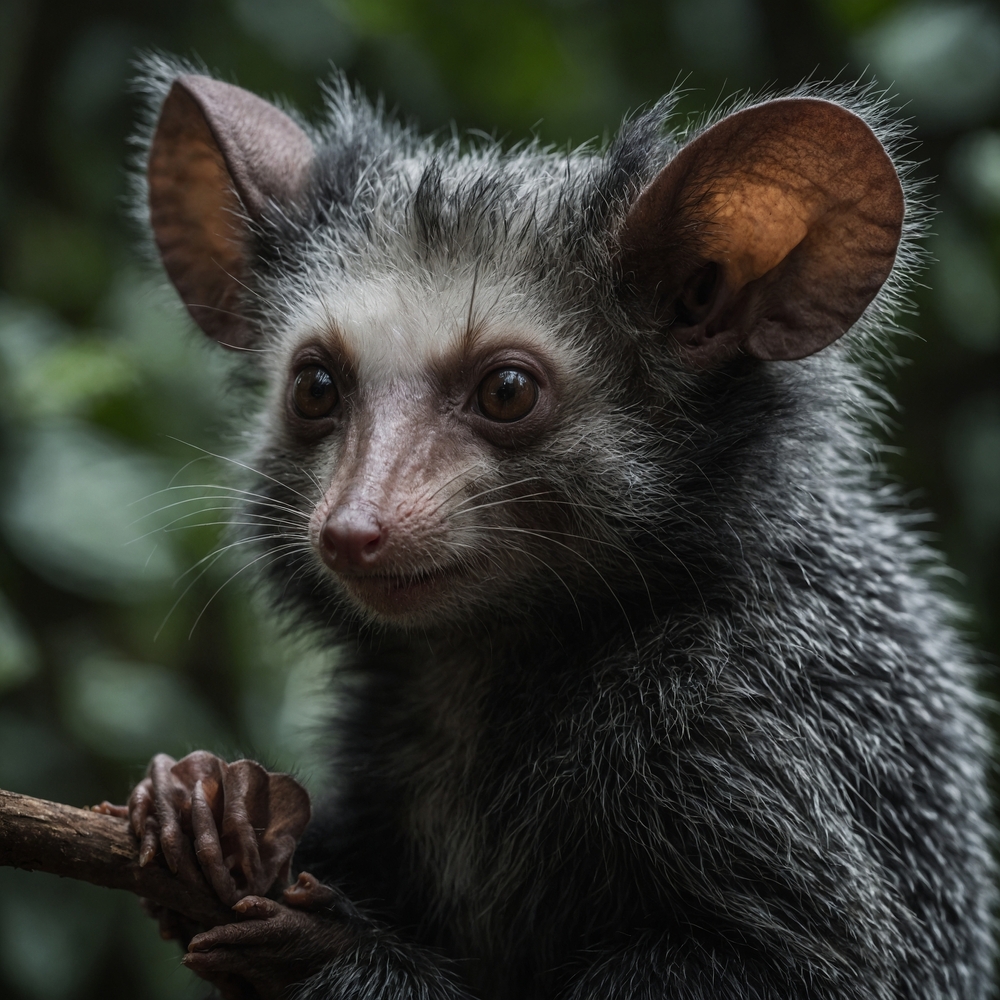
The aye-aye is one of those creatures that seems plucked straight from a fantasy novel. It hails from Madagascar, that island of wonders, bringing with it an aura of mystique. With its large, luminous eyes and extraordinarily long middle finger, this lemur is a nocturnal marvel. People have long associated the aye-aye with superstition, thinking it brings bad luck. However, its real magic lies in its unique adaptations for survival.
By tapping on bark with its elongated finger, the aye-aye can detect insects hiding beneath the surface. This oddity makes it the only primate with such a specialized hunting technique. Though its appearance might initially inspire fear, the aye-aye’s remarkable abilities showcase nature’s creativity. If anything, it underscores the need to protect our planet’s quirky inhabitants. It’s not just about preserving species; it’s about cherishing the eccentric tapestry that makes Earth so extraordinary.
2. The Goblin Shark: Deep Sea Nightmares
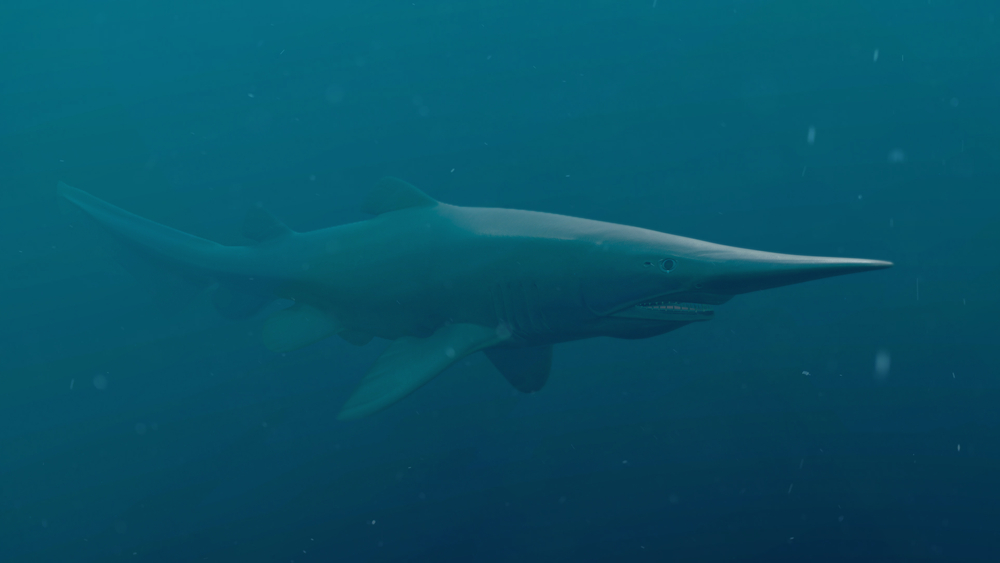
Imagine a face only a mother could love—or perhaps not. The goblin shark, with its protruding snout and razor-sharp teeth, is a deep-sea dweller that challenges conventional beauty standards. Found at depths of over 1,000 meters, this elusive creature has a jaw that can extend outward in a flash, making it a formidable predator. Despite its menacing appearance, the goblin shark is more of a curiosity to marine biologists than a threat to humans.
This shark’s pinkish hue and flabby body give it an appearance that is almost otherworldly. Its prehistoric lineage suggests it hasn’t changed much over millions of years, earning it the nickname “living fossil.” Despite its somewhat terrifying aesthetic, the goblin shark is a testament to the adaptability of life in the ocean’s dark recesses. It serves as a gentle reminder of how little we truly know about the vast marine world. Next time you dip your toes in the ocean, remember: it’s a world as full of wonders as it is of nightmares.
3. The Goliath Tigerfish: The Congo’s Underwater Tyrant
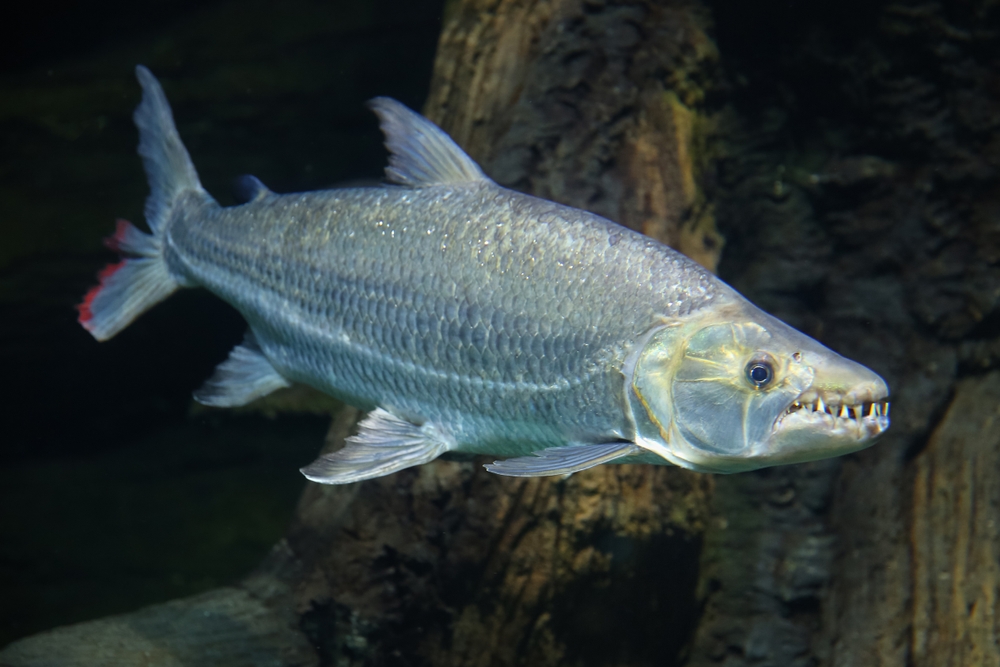
Venturing into the murky waters of the Congo River might not be on anyone’s bucket list, particularly with the goliath tigerfish lurking beneath. With dagger-like teeth and an aggressive disposition, this fish is not just a sight to behold but a predator that commands respect. Some might say it’s the freshwater equivalent of a great white shark. Anglers who encounter this beast speak of its power and the adrenaline rush of the chase.
This aquatic terror can grow over four feet long and weigh up to 110 pounds. Its formidable presence has made it a legend among fishermen worldwide. Yet, beyond its ferocity, the goliath tigerfish also plays a crucial role in the ecosystem, balancing fish populations. It’s an apex predator, after all, and an integral part of the river’s life cycle. For all its intimidation, the goliath tigerfish is a reminder of the untamed beauty that rivers hold.
4. The Shoebill Stork: Africa’s Dinosaurian Bird
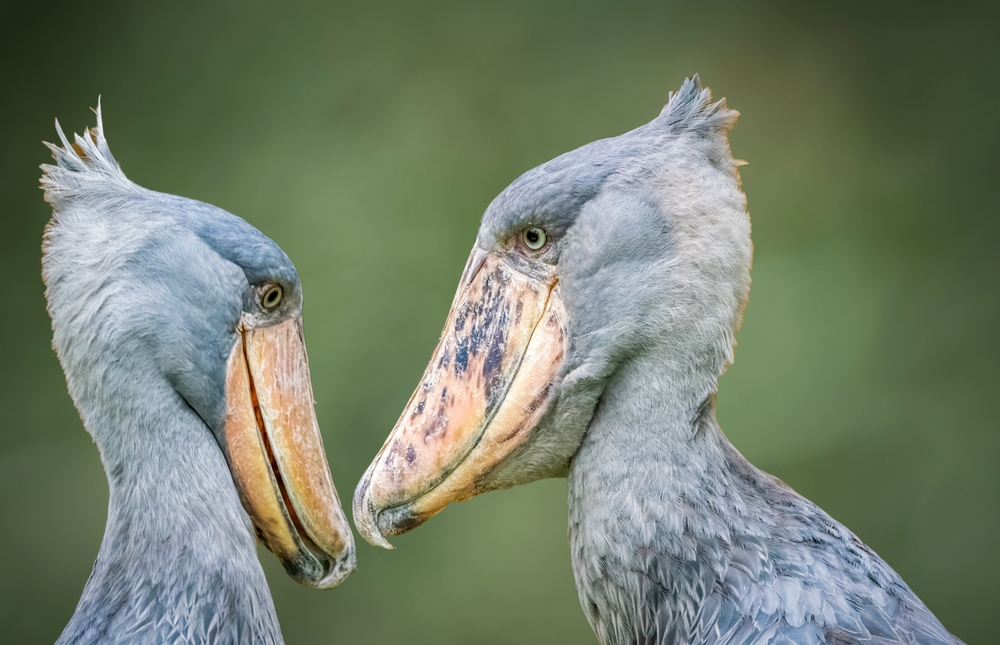
The shoebill stork is a bird that demands a double-take. With a beak resembling a Dutch clog and a stature that can outsize a small child, it’s no wonder this bird has earned a reputation as one of Africa’s oddest avians. Trying to ignore a shoebill when it’s in your presence is like trying to ignore a living, breathing relic from the age of dinosaurs. They stand in marshes with an eerie stillness, their piercing eyes scanning for prey.
Yet, despite their intimidating appearance, shoebills are surprisingly solitary and non-aggressive to humans. Their preferred meals—lungfish and small reptiles—mean they play a vital role in controlling these populations. While they might seem like creatures of myth, shoebills are very much real, and their existence adds a touch of the ancient to modern ecosystems. They serve as a stark reminder of the diversity and complexity of the natural world. From their quirky looks to their quiet demeanor, shoebills are truly a marvel to behold.
5. The Tasmanian Devil: Australia’s Ferocious Marsupial
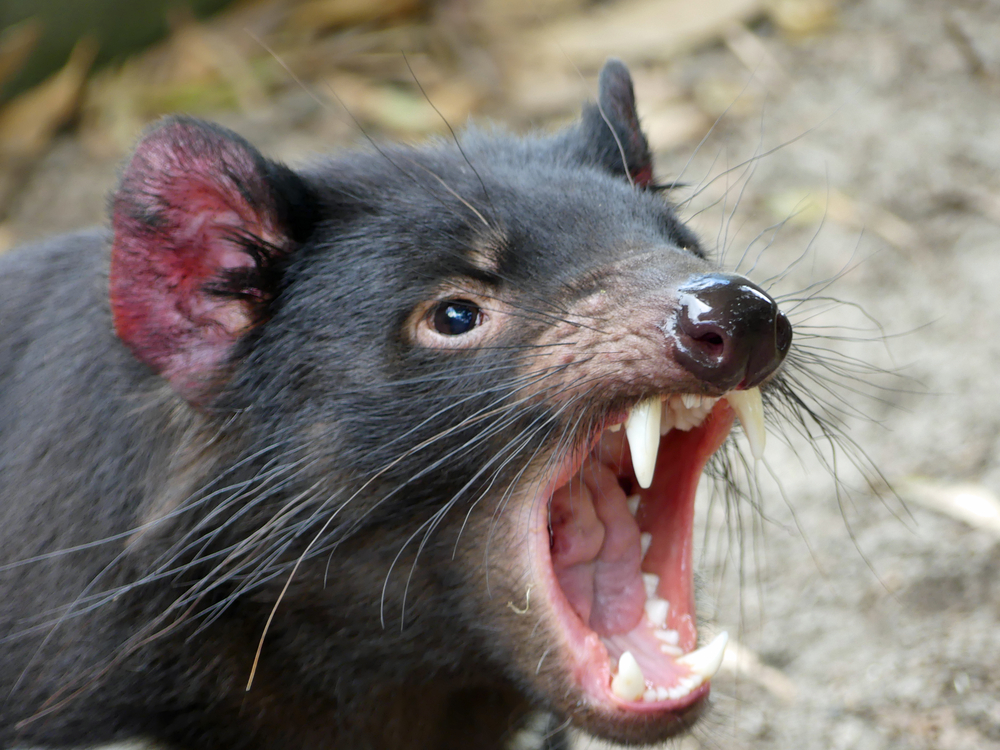
Don’t be fooled by the cartoon character; the real Tasmanian devil is a force to be reckoned with. This carnivorous marsupial, found only in Tasmania, is known for its ferocious temperament and bone-chilling screeches. Despite being the size of a small dog, the Tasmanian devil has one of the strongest bites relative to its size. This allows it to devour an entire carcass, bones and all.
Recently, the Tasmanian devil population has been threatened by a contagious form of cancer, prompting conservationists to take action. While efforts are underway to preserve this unique species, their ecological role in controlling the spread of disease via scavenging cannot be understated. Encountering a Tasmanian devil in the wild would be both thrilling and humbling. They embody the raw, untamed spirit of the Australian wilderness. For all their fierceness, their survival symbolizes resilience in the face of adversity.
6. The Komodo Dragon: Indonesia’s Living Dragon
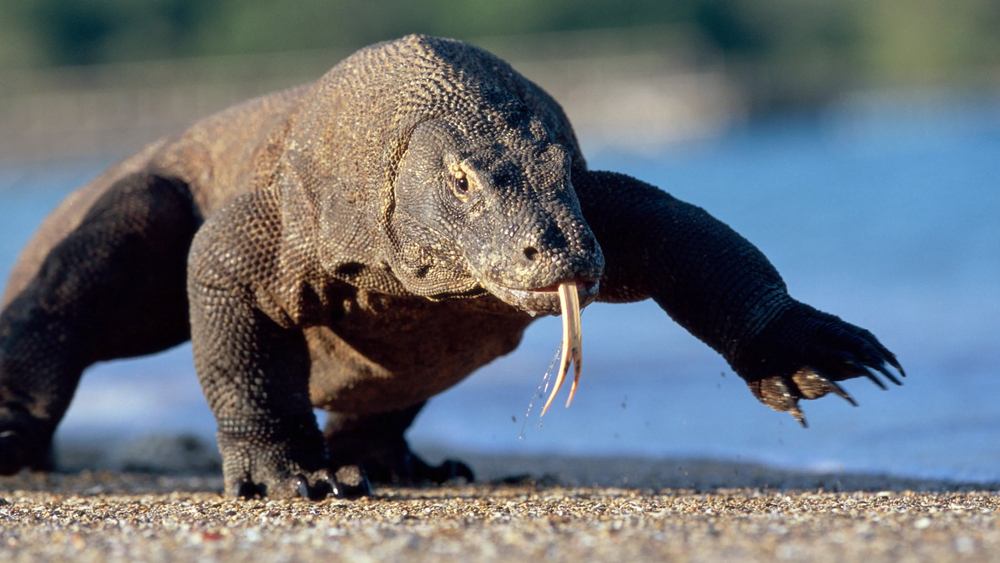
No journey through terrifying wildlife would be complete without a nod to the Komodo dragon. Found on a few select Indonesian islands, this reptilian giant lives up to its mythical name. With venomous saliva and a powerful tail, the Komodo dragon is an apex predator with few natural enemies. Its sheer size and strength make it a creature of both admiration and fear.
Despite their fearsome reputation, Komodo dragons are a vital part of their ecosystem, controlling populations of various animals. They have been known to even hunt and take down large prey, like deer and water buffalo. Their incredibly slow metabolism allows them to go weeks without a meal, a trait that has intrigued scientists for years. As with many other magnificent creatures, their numbers are dwindling due to habitat destruction and human encroachment. Protecting the Komodo dragon ensures we keep part of our world’s ancient allure alive. After all, who wouldn’t want to share a planet with a real-life dragon?
7. The Saiga Antelope: Central Asia’s Ghostly Wanderer
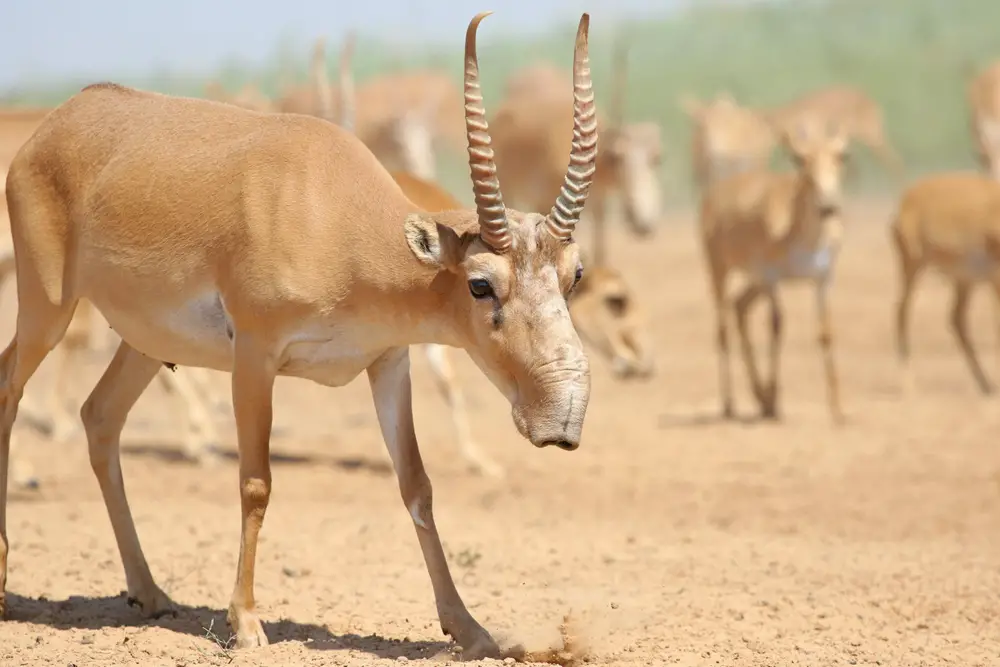
Roaming the steppes of Central Asia, the saiga antelope is a sight like no other. Its distinctive, bulbous nose is not just a quirky feature but a tool for filtering dust and regulating temperature. This antelope has been around since the Ice Age, and its continued existence is a testament to its adaptability. Unfortunately, the saiga faces dire threats from poaching and habitat loss, pushing it towards the brink of extinction.
The saiga’s plight has led to international efforts for its conservation, highlighting the global importance of this unusual creature. Despite its precarious status, the saiga remains an integral part of the steppe ecosystem. Its grazing habits help maintain the balance of plant species, ensuring the health of these vast expanses. Seeing a herd of saiga moving across the plains is like watching a living relic of a bygone era. Their survival is a poignant reminder of nature’s fragility and resilience.
8. The Pistol Shrimp: The Ocean’s Tiny Powerhouse
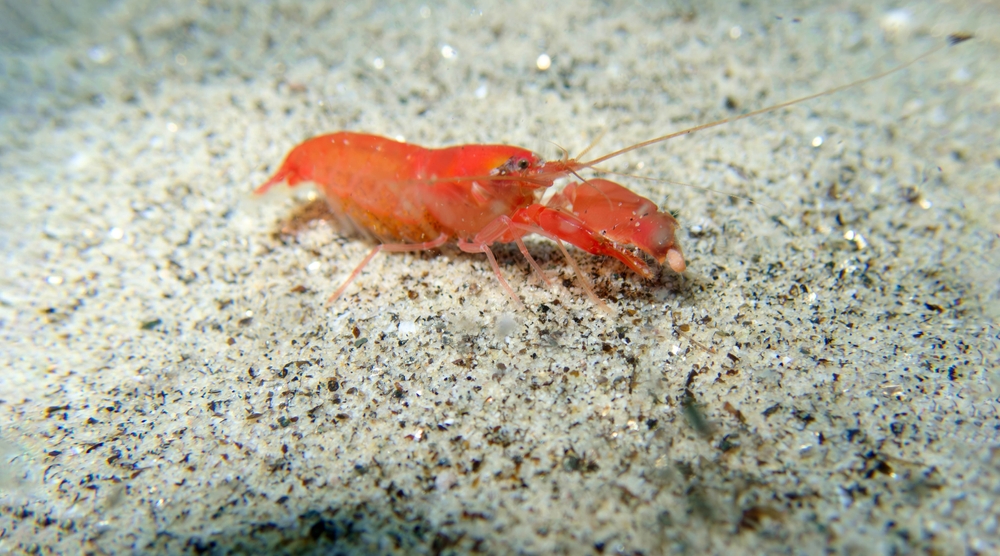
Don’t let its size fool you; the pistol shrimp packs a punch that defies its miniature stature. This little crustacean can snap its claw with such speed that it creates a cavitation bubble. When the bubble collapses, it produces a shockwave strong enough to stun or even kill small fish. The snap also generates a flash of light and temperatures that rival the sun’s surface for a split second—impressive, right?
Despite its fearsome capabilities, the pistol shrimp is more of a marvel than a menace. It forms mutualistic relationships with goby fish, where the shrimp provides shelter, and the goby acts as a lookout. This partnership showcases the intricacies of marine ecosystems and the interdependence of species. The pistol shrimp’s adaptability and raw power illustrate that size isn’t everything in the animal kingdom. It’s a tiny testament to the wonders lurking beneath the ocean waves.
9. The Mata Mata Turtle: South America’s Master of Disguise
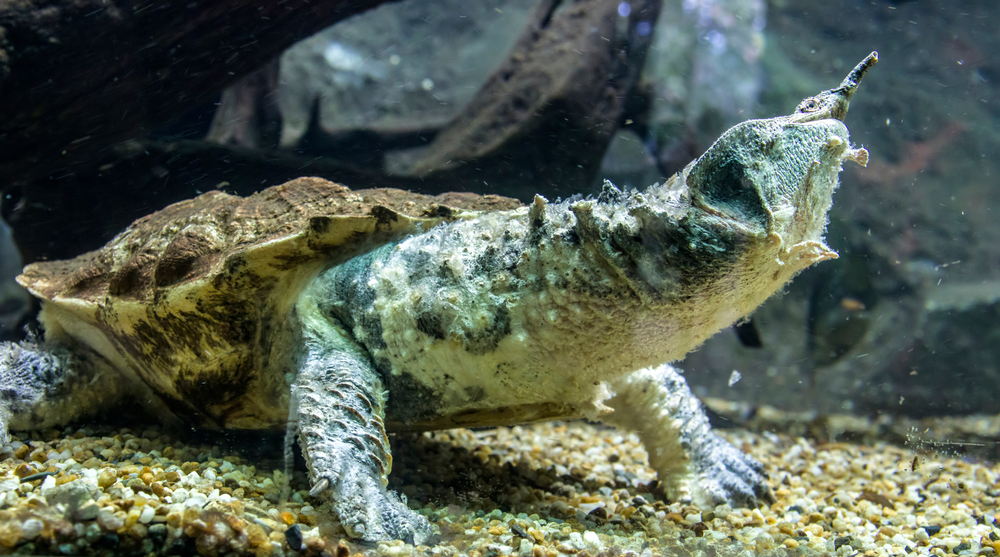
Welcome to the Amazon, where the mata mata turtle resides in quiet camouflage. With its leaf-like head and rough-textured shell, this turtle blends seamlessly into its watery surroundings. Its appearance is its best defense, allowing it to lie in wait for unsuspecting prey. The mata mata is a master of patience, using its natural disguise to ambush fish and other small creatures.
This turtle’s unique appearance has not only made it an object of fascination for herpetologists but also a symbol of the Amazon’s hidden wonders. However, like many creatures of the rainforest, it faces threats from habitat destruction and the pet trade. Preserving the mata mata turtle means protecting the rich biodiversity of the Amazon. It serves as a reminder of how evolution can craft complexity and beauty in the most unexpected forms. In a world of ever-changing landscapes, the mata mata remains a testament to the art of survival.
10. The Cassowary: Australia’s Prehistoric Guardian
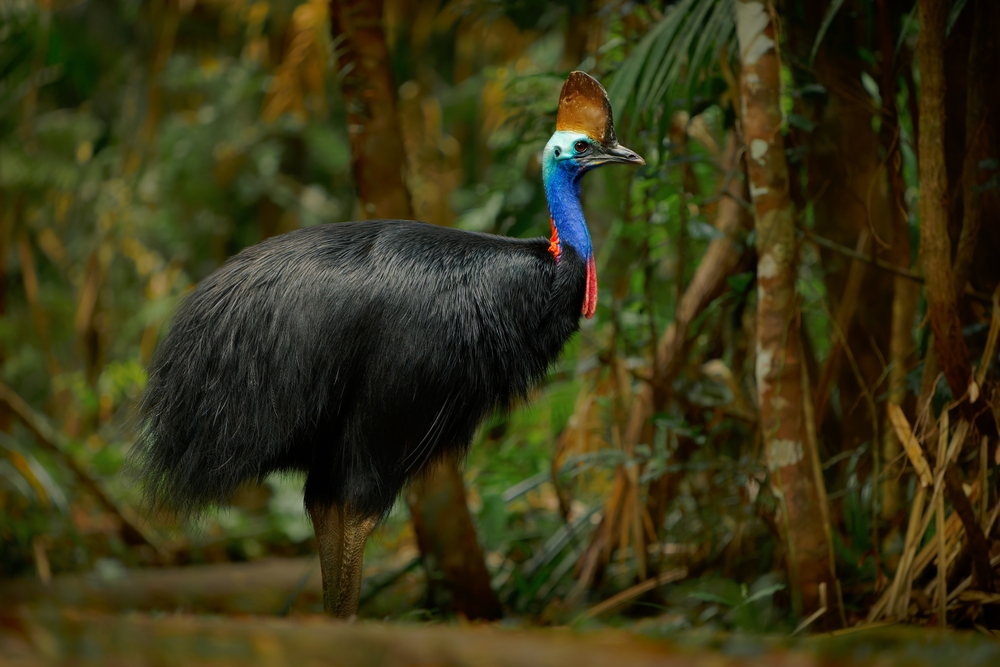
Few birds can claim to be as formidable as the cassowary. Native to the forests of New Guinea and northern Australia, this bird is often likened to a living dinosaur. Standing over six feet tall, equipped with a helmet-like casque and dagger-like claws, the cassowary commands respect. It’s not just its size and appearance that are intimidating; cassowaries are known to be fiercely territorial and have been involved in rare yet serious confrontations with humans.
Despite their fearsome reputation, cassowaries play a crucial role in their habitat by dispersing seeds from the fruits they consume. Their presence is vital for maintaining the health of their rainforest home. Conservation efforts are key to ensuring these ancient birds continue to thrive, as habitat loss remains a significant threat. To encounter a cassowary in the wild is to glimpse a piece of our planet’s prehistoric past. They remind us of the incredible diversity and complexity of the avian world.
11. The Giant Anteater: South America’s Gentle Giant
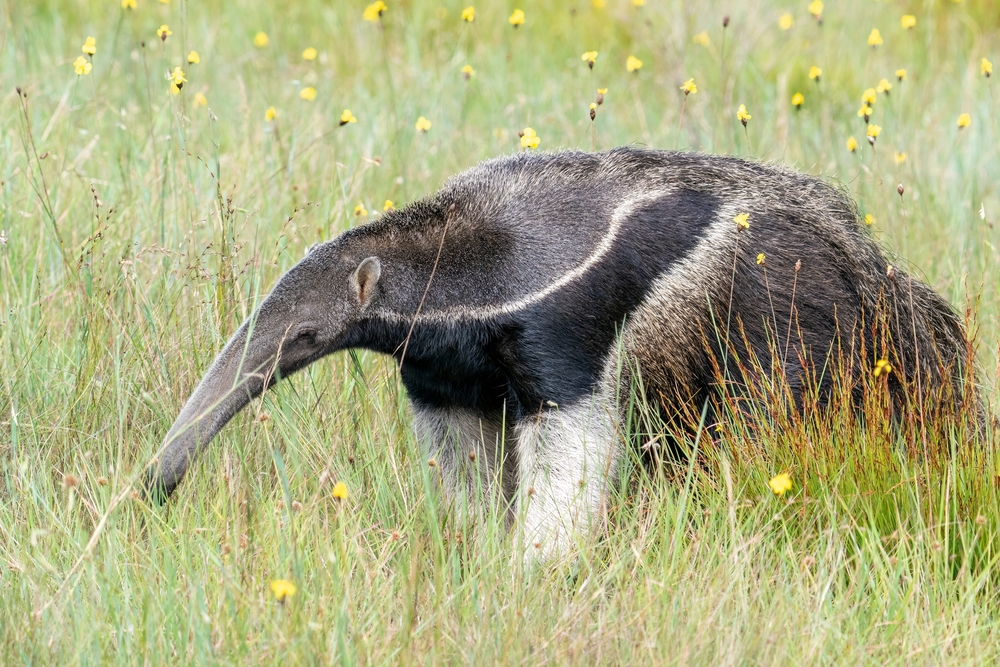
The giant anteater may look like it sauntered out of a children’s storybook, but it’s every bit a formidable creature. With a long, sticky tongue capable of flicking in and out of its mouth up to 150 times per minute, this animal is a vacuum for ants and termites. Despite its peculiar feeding habits, the giant anteater exudes an undeniable charm. Its shaggy fur and bushy tail add to its whimsical appearance.
This creature is not only fascinating but also essential for controlling insect populations in its native ecosystems. While it’s mostly solitary and non-aggressive, the giant anteater can defend itself with powerful claws when threatened. This peaceful giant roams the grasslands and forests of South America, often going unnoticed by people. Unfortunately, habitat destruction and road accidents have put them at risk. Preserving their habitats ensures that we continue to share our world with these gentle, curious giants.
12. The Thorny Devil: Australia’s Spiny Marvel
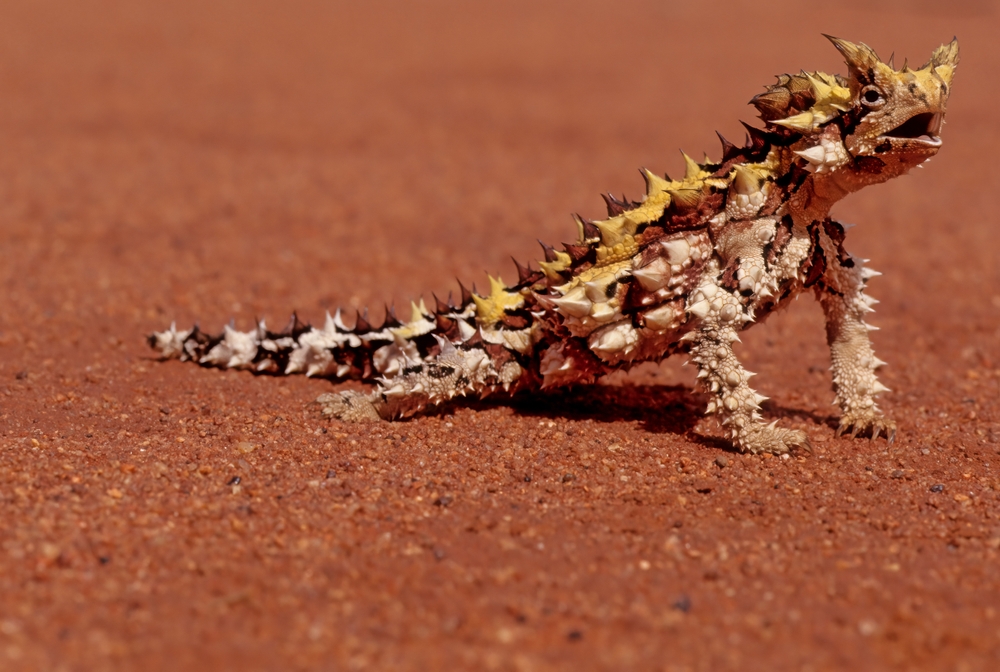
Australia never ceases to amaze with its roster of unique wildlife, and the thorny devil is no exception. This small lizard, covered in thorn-like spikes, is a master of desert survival. Its appearance serves as both a defense mechanism and a water collection system. When it rains, water travels along the grooves between its spikes directly to its mouth.
The thorny devil’s diet consists almost exclusively of ants, which it consumes in large quantities. Observing its methodical approach to ant consumption is a reminder of the intricate balance of desert ecosystems. Despite its fearsome appearance, the thorny devil is harmless and an essential part of its environment. Its survival strategies have fascinated scientists, offering insights into the marvels of adaptation. This spiky little creature is a symbol of resilience, thriving in one of the world’s harshest climates.
13. The Okapi: The Forest’s Enigmatic Equine
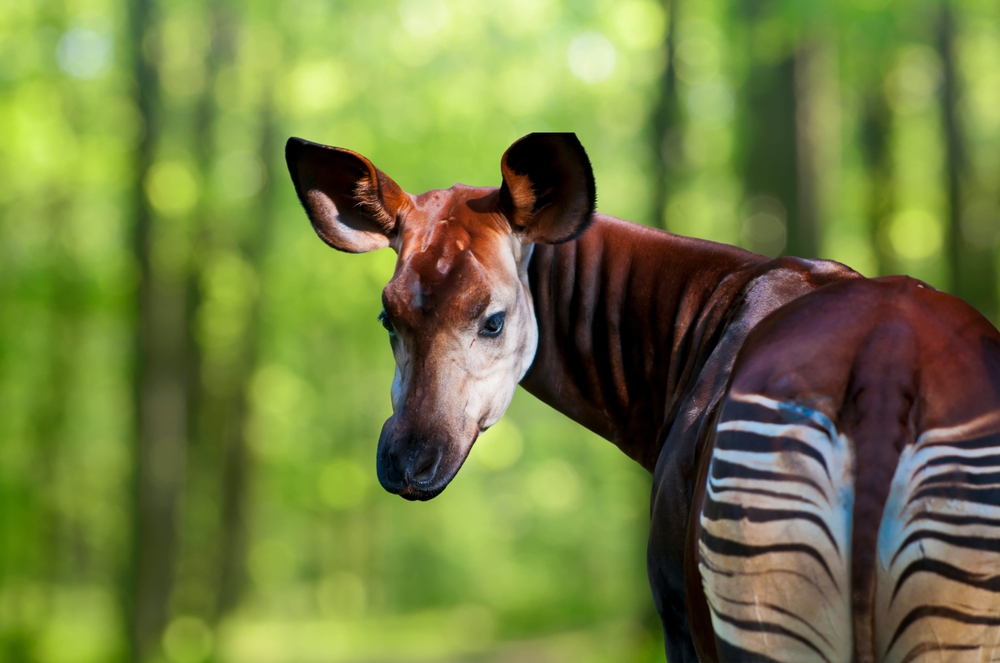
The okapi, with its zebra-like stripes and giraffe-like body, looks as though it belongs in a mythical bestiary. Native to the dense rainforests of the Democratic Republic of Congo, this elusive animal is a wonder of evolution. Its stripes serve as camouflage, blending into the forest’s dappled light. Despite its resemblance to other animals, the okapi is actually more closely related to the giraffe.
Living largely in solitude, the okapi moves silently through the forest, adding to its mystique. Its long, prehensile tongue is not only perfect for grasping foliage but also for grooming. Conservationists are working tirelessly to protect the okapi from poaching and habitat destruction. Preserving their habitat is crucial for maintaining the biodiversity of the African rainforest. The okapi is a testament to nature’s ability to create wonders unseen by most, reminding us of the mysteries that still await discovery.
